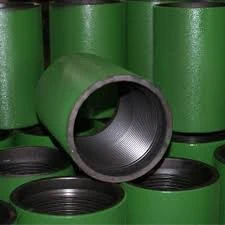- Afrikaans
- Albanian
- Amharic
- Arabic
- Armenian
- Azerbaijani
- Basque
- Belarusian
- Bengali
- Bosnian
- Bulgarian
- Catalan
- Cebuano
- Corsican
- Croatian
- Czech
- Danish
- Dutch
- English
- Esperanto
- Estonian
- Finnish
- French
- Frisian
- Galician
- Georgian
- German
- Greek
- Gujarati
- Haitian Creole
- hausa
- hawaiian
- Hebrew
- Hindi
- Miao
- Hungarian
- Icelandic
- igbo
- Indonesian
- irish
- Italian
- Japanese
- Javanese
- Kannada
- kazakh
- Khmer
- Rwandese
- Korean
- Kurdish
- Kyrgyz
- Lao
- Latin
- Latvian
- Lithuanian
- Luxembourgish
- Macedonian
- Malgashi
- Malay
- Malayalam
- Maltese
- Maori
- Marathi
- Mongolian
- Myanmar
- Nepali
- Norwegian
- Norwegian
- Occitan
- Pashto
- Persian
- Polish
- Portuguese
- Punjabi
- Romanian
- Russian
- Samoan
- Scottish Gaelic
- Serbian
- Sesotho
- Shona
- Sindhi
- Sinhala
- Slovak
- Slovenian
- Somali
- Spanish
- Sundanese
- Swahili
- Swedish
- Tagalog
- Tajik
- Tamil
- Tatar
- Telugu
- Thai
- Turkish
- Turkmen
- Ukrainian
- Urdu
- Uighur
- Uzbek
- Vietnamese
- Welsh
- Bantu
- Yiddish
- Yoruba
- Zulu
what is the difference between casing and tubing?
The Difference Between Casing and Tubing in Oil and Gas Production
In the realm of oil and gas production, two critical components are essential for the successful extraction and transportation of hydrocarbons casing and tubing. Understanding the differences between these two elements is crucial for professionals in the field as well as stakeholders interested in the operational aspects of oil and gas drilling. While both casing and tubing serve specific functions in the well architecture, they differ fundamentally in their design, purpose, and installation procedures.
What is Casing?
Casing refers to the large steel pipes that are installed in the drilled wellbores to provide structural integrity and isolation. The primary purpose of casing is to prevent the walls of the well from collapsing during and after the drilling process. Casing serves several vital functions
1. Wellbore Stability By lining the wellbore with casing, the surrounding rock formations are stabilized, preventing collapses that could jeopardize the drilling operation. This is critical, especially in formations that are unstable or prone to shifting.
2. Isolation of Layers Casing acts as a barrier to ensure that fluids (including water, gas, and oil) do not migrate between different geological layers. This is crucial for protecting freshwater aquifers and maintaining the integrity of hydrocarbon zones.
3. Support for Long-term Operations Casing can also support equipment and materials that need to be deployed in the well, such as tubing, pumps, and valves.
Casing is installed in stages, with each stage requiring a cementing process to secure the pipe in place and further enhance the well's stability. Various types of casing exist, such as surface casing, intermediate casing, and production casing, each serving different functions based on the stage of drilling and the specific geological conditions encountered.
What is Tubing?
what is the difference between casing and tubing?

Tubing, on the other hand, refers to the smaller diameter pipes that are installed within the casing. The primary purpose of tubing is to transport oil, gas, and other fluids from the reservoir to the surface. Unlike casing, which is primarily concerned with structural integrity and isolation, tubing focuses on the actual extraction of hydrocarbons. Key functions of tubing include
1. Fluid Transportation Tubing is designed to carry the produced fluids (oil, gas, and water) from the wellbore to the surface processing facilities. Its design and material are suited to handle the pressure and temperature conditions encountered during production.
2. Production Control Tubing strings often include various control devices, such as valves and flow control equipment, that help regulate the flow of hydrocarbons, ensuring efficient operations.
3. Ease of Maintenance Tubing can be pulled out of the well for maintenance or replacement without the need to remove the casing, providing greater flexibility in managing downhole conditions.
Key Differences
The fundamental differences between casing and tubing can be summarized as follows
- Purpose Casing is primarily used for wellbore stability and isolation, while tubing is focused on transporting produced fluids to the surface. - Size Casing pipes are larger in diameter compared to tubing, with multiple casing sizes available depending on specific well conditions. Tubing generally has a smaller diameter to facilitate the flow of hydrocarbons. - Installation Casing is cemented in place during drilling, forming a permanent barrier, whereas tubing is typically inserted later and can be removed or replaced without disrupting the casing. - Material Strength Casing must be designed to withstand the pressures from the surrounding geological formations, as well as the forces generated during drilling. Tubing needs to be robust but is primarily focused on handling the fluids and pressures during production.
Conclusion
In summary, casing and tubing are integral to the oil and gas drilling and production processes, serving complementary yet distinct roles. Casing ensures the structural integrity and safety of the wellbore, while tubing provides an efficient means for transporting hydrocarbons to the surface. A thorough understanding of these components is essential for effective well design, operation, and maintenance, ultimately contributing to the success of oil and gas extraction efforts.
-
Tubing Pup Joints: Essential Components for Oil and Gas OperationsNewsJul.10,2025
-
Pup Joints: Essential Components for Reliable Drilling OperationsNewsJul.10,2025
-
Pipe Couplings: Connecting Your World EfficientlyNewsJul.10,2025
-
Mastering Oilfield Operations with Quality Tubing and CasingNewsJul.10,2025
-
High-Quality Casing Couplings for Every NeedNewsJul.10,2025
-
Boost Your Drilling Efficiency with Premium Crossover Tools & Seating NipplesNewsJul.10,2025







